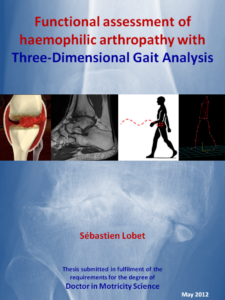Filter by category to narrow the search result.
- All
- Biomechanics
- Developing countries
- Dutch
- English
- Free download
- French
- Haemophilia
- MSK management of haemophilia
- Non classé
- Outcome assessment
- Pain
- Research

Joint status, pain and quality of life in elderly peoplewith haemophilia: A case-control study
Request
Introduction: Elderly people with haemophilia (PwH) develop haemophilic arthropathy, pain, and reduced health-related quality of life (HR-QoL).
The condition of elderly mild haemophilia patients have rarely been evaluated. This study aimed to compare joint status, pain, and HR-QoL between elderly with mild, moderate/severe haemophilia and healthy elderlies.
Methods: Knee/ankle abnormalities were assessed by ultrasound (HEAD-US) and physical examination (HJHS 2.1). Pain severity and pain interference were investigated using the Brief Pain Inventory. Pressure pain thresholds (PPTs) were obtained at knees/ankles and forehead. Functional limitations were evaluated using the 2-Minute-Walking-Test, Timed-Up-and-Go and HAL. The EQ-5D-5L questionnaire evaluated HR-QoL. Healthy controls (HCs) and elderly individuals with moderate/severe and mild haemophilia were compared using Kruskal-Wallis and Mann-Whitney U tests. Results: From the 46 elderly PwH approached, 40 individuals (≥60 years) with haemophilia A/B (17 moderate/severe; 23 mild) and 20 age-matched HCs were recruited. Moderate/severe PwH displayed worse joint status, lower PPTs, and poorer HR-QoL than mild PwH and HCs (p-value = .010-<.001). HEAD-US abnormalities were observed in 100% of knees and 94% of ankles in moderate/severe PwH, versus 50% of knees and 61% of ankles in mild PwH. Pain was reported by 80% and 57% of moderate/severe and mild PwH, respectively. Low PPTs, functional limitations, and poor HR-QoL scores were likewise observed in some mild PwH, yet without significantly differing from HCs. Conclusion: This study highlights poor joint/functional status, pain, and HR-QoL outcomes in elderly with moderate/severe haemophilia. A few mild haemophilia subjects presented joint abnormalities, pain, functional limitations, and poor HR-QoL, without significantly differing from HCs. Highlights: Elderly individuals with mild haemophilia have not yet been extensively studied, whereas moderate/severe haemophilia individuals have proven to suffer from haemophilic arthropathy, pain, and poor health-related quality of life (HR-QoL). Using a case-control design, joint status, pain, and HR-QoL outcomes were examined in elderly haemophilia individuals and compared with those of healthy controls (HCs). Elderly moderate/severe haemophilia individuals exhibited worse joint status, increased joint pain sensitivity, and reduced HR-QoL compared with both mild haemophilia subjects and HCs. A subset of mild haemophilia subjects exhibited poor joint status, pain, and HR-QoL outcomes, without any differences noted when compared with HCs.
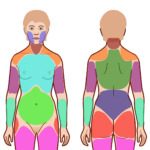
The Classification of Suspected Predominant Nociplastic Pain in People with Moderate and Severe Haemophilia: A Secondary Exploratory Study
In people with haemophilia (PwH), joint pain is a major comorbidity that is often overlooked and under-treated.

Building a haemophilia-specific navigator in Epic® Electronic Health Records: Single-centre preliminary experience
Request
Introduction: With the increasing complexity of haemophilia care and the advent of numerous therapeutic innovations, there is an unmet need for documentation and data collection tools tailored to people with haemophilia (PwH).

Psychophysical assessment of pain in adults with moderate and severe haemophilia: A cross-sectional study
Request
Background: Joint pain is the hallmark of haemophilia; therefore it seems clinically rather a musculoskeletal than a bleeding disorder.
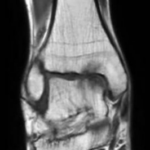
Discordance between joint pain and imagery severity in the ankle joint and contributors of lower limb activity limitations in adults with haemophilia: A cross-sectional study
People with haemophilia (PwH) suffer from knee and ankle joint pain, but the association with structural damage remains underexplored.
They report activity limitations but it is unclear which factors contribute to lower limb activity limitations (LL-AL). Aims: This study aimed (i) to analyse the association between ankle joint pain and structure and (ii) explore the contribution of haemophilia-related, individual and psychological factors to LL-AL in PwH. Methods: This study included 104 moderate/severe PwH. Ankle pain intensity was assessed with a numeric rating scale and pain sensitivity with algometry (pressure pain threshold (PPTA)). Ankle structure was assessed with MRI (IPSG-MRI) and ultrasound (HEAD-US), joint health with the Haemophilia Joint Health Score (HJHS). The HAL-LOWCOM subscore evaluated LL-AL. A Spearman correlation analysed the correlation between ankle pain and structure. The contribution of haemophilia-related factors (joint health, overall pain (Brief Pain Inventory-Pain Severity (BPI-PS)), functional status (2-Minute-Walking-Distance, Timed Up and Go); individual factors (age, BMI) and psychological factors (fear and avoidance beliefs over physical activity (FABQ-PA) and work (FABQ-Work), anxiety and depression) to LL-AL was explored using a regression analysis Results: Only low correlations were found between ankle pain intensity and structure (IPSG-MRI, HEAD-US). PPTA was unrelated to structure. Altogether, HJHS, overall pain (BPI-PS), FABQ-Work and age explained 69% of HAL-LOWCOM variance, with 65% explained by the combination of HJHS and BPI-PS. Conclusion: No meaningful associations were found between ankle pain and structural damage, suggesting that other factors may contribute to PwH’s ankle pain. In contrast, mainly haemophilia-related factors explained LL-AL variance

Pain interferes with daily activities, emotions and sleep in adults with severe, moderate and mild haemophilia: A national cross-sectional survey
Request
Pain is a major issue in people with haemophilia (PwH). Few studies comprehensively assessed pain in PwH using a biopsychosocial framework and studies in mild PwH are lacking.
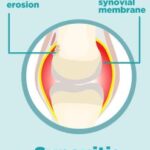
Synovitis and joint health in patients with haemophilia: Statements from a European e-Delphi consensus study
Request
Introduction: Synovitis, a common feature in haemophilia, is triggered by the presence of blood in joints, and represents the first step towards the development of chronic arthropathy.
Aim: This study aimed to develop an expert consensus relating to the definition, patho-physiology, diagnosis, prevention, follow-up and treatment of synovitis, recognising its relevance for joint health and taking into account existing knowledge gaps. Methods:A Delphi consensus study was designed and performed. An expert group prepared 22 statements based on existing literature; a wider expert panel subsequently voted on these. Results: Retention of panellists was high. Four statements required amending and
consensus on all statements was achieved after three rounds of voting. Conclusion: This e-Delphi consensus study addressed the importance of synovitis in joint health of people with haemophilia and highlighted knowledge gaps in this field. Studies on the natural course of synovitis are lacking and the biological mechanisms underlying this process are not yet fully elucidated. While basic and clinical research proceeds in this field, expert consensus can help guide clinicians in their routine clinical practice, and Delphi methodology is often used to produce best-practice guidelines.

ACTIVLIM-Hemo: A new self-reported, unidimensional and linear measure of activity limitations in persons with haemophilia
To assess activity limitations in people with haemophilia (PwH), the self-reported Haemophilia Activity List (HAL) is widely employed, despite several methodological limitations impacting the interpretation of categorical scores.
psychometric approaches avoid these limitations by using a probabilistic model, such as the Rasch model. The ACTIVLIM is a Rasch-built measurement of activity limitations previously validated in several clinical conditions like neuromuscular disorders. Aims: This study sought to develop the ACTIVLIM-Hemo, meaning an ACTIVLIM scale version specifically adapted to assess daily activity limitations in adult PwH. Methods: Daily activities were assessed as “impossible,” “difficult” or “easy” by 114 PwH (median age of 44 years) with 63 of them reassessed after 12 days. The Rasch Rating Scale model was used to identify activities delineating a unidimensional and linear scale unbiased by demographic and clinical status. Concurrent validity was determined through correlation with the HAL sub-scores and sum score. Results: The ACTIVLIM-Hemo included 22 pertinent activities, with difficulties independent of demographic and clinical conditions, allowing a reliable measure of activity limitations (PSI = .92) expressed on a linear and unidimensional scale in PwH (7%–100 % range, ceiling effect of 1/114) with excellent test-retest reliability (ICC = .978). Spearman rank correlations between ACTIVLIM-Hemo and HAL sub-scores ranged between .623 and .869. Conclusions: The ACTIVLIM-Hemo is an easy-to-administer, valid and reliable alternative to HAL in assessing activity limitations in PwH. Its invariant scale can be used across conditions and time to compare the functional status of PwH over a wide measurement range

Activité physique, sports et nouveaux traitements de l’hémophilie
Download
La pratique d’une activité physique régulière peut aider à prévenir le développement de comorbidités telles que l’obésité, le syndrome métabolique et l’ostéoporose chez les patients hémophiles.

Pain coping behaviour strategies in peoplewith haemophilia: A systematic literature review
Request
Despite the fact that joint bleeds (haemarthrosis) frequently occur in people with haemophilia (PwH) with invalidating arthropathies as result, the clinical pain experience has received only limited attention
A sudden increase in pain intensity can be linked to a bleed, but in most cases, no acute bleed is confirmed. Nevertheless, a patient’s perception of an acute bleed as cause of the pain might impact the patients’ behaviour in response to pain. It is therefore essential to gain more insight into pain coping strategies seen in PwH. Aim: This systematic review aims to identify the range of pain coping behaviour strategies used among PwH and the factors associated with pain coping behaviour. Methods: This review was reported according to the Preferred Reporting Items for Systematic reviews and Meta-analyses guidelines (PRISMA). PubMed andWeb of Science were systematically screened for relevant literature using keyword combinations related to adult PwH, pain and pain coping behaviour strategies. Risk of bias was assessed with the modified Newcastle-Ottowa Scale. Results: Eleven full text articles (nine cross-sectional and two comparative studies) consisting of 1832 PwH met the inclusion criteria. Due to the heterogeneity of the study samples, quality of evaluation instruments and varying risk of bias, it was difficult to draw conclusions regarding the used pain coping behaviour strategies and associated factors. Conclusion: Literature on pain coping behaviour strategies and associated factors in PwH is still scarce and describes heterogenous results. Validated haemophilia-specific instruments are warranted to inventory pain coping behaviour in a standardized way.
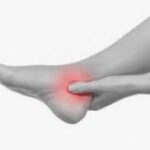
Gainingmore insight into ankle pain in haemophilia: A study exploring pain, structural and functional evaluation of the ankle joint
Request
Ankle arthropathy is highly prevalent among people with haemophilia (PwH), even with prophylaxis, and leads to pain and disability. Mechanisms and consequences of painful symptoms related to ankle arthropathy have not been extensively studied.
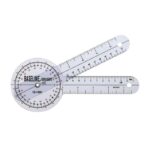
The Hemophilia Joint Health Score version 2.1 Validation in Adult Patients Study: A multicenter international study
Request
The Hemophilia Joint Health Score (HJHS) was developed and validated to detect arthropathy in children. Additional evidence is required to show validity in adults. We studied the convergent and discriminant construct validity of the HJHS version 2.1(HJHSv2.1) in adults with hemophilia

Effects of a supervised therapeutic exercise program on musculoskeletal health and gait in patientswith haemophilia: A pilot study
Request
Episodes of bleeding in patients with haemophilia (PwH) are associated with haemophilic arthropathy, limitations in physical performance, reduced quality of life (QoL), and gait disorders.
Aim: This non-randomized, controlled, interventional, prospective, single-centre pilot study aimed to assess the effects of an 8-week supervised therapeutic exercise program on musculoskeletal health, gait kinematic parameters (GKP), functional capacity, and QoL in adult PwH. Methods: Nineteen PwH were allocated to an exercise group (n = 10) or a control group (n = 9). The patients in the exercise group followed an 8-week supervised therapeutic exercise program. The Haemophilia Joint Health Score (HJHS), a twodimensional video-based gait kinematic analysis (2D-GKA), the 6-min walking test (6MWT), and the Haemophilia Quality of Life Questionnaire for Adults (Haem-A-Qol) were used as the outcome measures at baseline, after the exercise program(at the 8th week), and at the 6th-month follow-up. Results: A significant improvement was observed in the exercise group in the HJHSTotal and Haem-A-Qol Total scores and the 6MWT value after the exercise program. Moreover, the 2D-GKArevealed improvement in most of theGKP(knee extension during the midstance and late swing phases, ankle dorsiflexion during the midstance phase, and ankle plantar flexion during the preswing phase). However, the gain obtained by the exercise program was not maintained at the 6th-month follow-up for the HJHSTotal and Hem-A-QoL-Total scores and GKP. Conclusion: The 8-week supervised therapeutic exercise program was successful
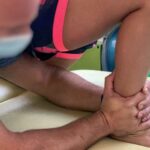
Évaluation clinique de la cheville et de l’arrière-pied en kinésithérapie musculosquelettique
Request
Les lésions de la région cheville-pied sont les troubles musculosquelettiques les plus fréquemment rencontrés aux urgences mais aussi sur les terrains de sport ou en pratique clinique.
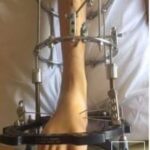
Clinical and Biomechanical Progression after Ankle Joint Distraction in a Young Adolescent Patient with Haemophilia
Ankle joint distraction (AJD) has been described to be a valuable joint-sparing alternative to arthrodesis or arthroplasty; however, clinical endpoints associated to this surgical intervention are lacking.
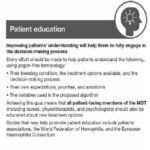
Hemophilia treatment in 2021: Choosing the”optimal” treatment using an integrative, patient-oriented approach to shared decision-making between patients and clinicians
The mainstay of hemophilia treatment is to prevent bleeding through regular long-term prophylaxis and to control acute breakthrough bleeds.
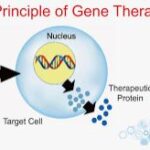
Implications of haemophilia gene therapy for the changing role of themultidisciplinary team
Gene therapies (GT) for haemophilia are in clinical trials, and under review by regulatory agencies with an expectation they may become available in clinical practice over the coming years.
managed using a hub-and-spoke model, with GT prescribed and managed exclusively in expert comprehensive care centres (the hub), and monitored in HTCs (the spokes) in close communication

Musculoskeletal ultrasound in hemophilia: Results and recommendations from a global survey and consensus meeting
For persons with hemophilia, optimization of joint outcomes is an important unmet need. The aim of this initiative was to determine use of ultrasound in evaluating arthropathy in persons with hemophilia, and to move toward consensus among hemophilia care providers regarding the preferred ultrasound protocols for global adaptation

The Role of Physiotherapy in the New Treatment Landscape for Haemophilia
The physiotherapist plays an essential role for people with haemophilia, an inherited bleeding disease responsible for musculoskeletal complications.

Feasibility and outcomes of low-dose and low-frequency prophylaxis with recombinant extended half-life products (Fc-rFVIII and Fc-rFIX) in Ivorian children with hemophilia: Two-year experience in the setting of World Federation of Haemophilia humanitarian aid programme
Request
Introduction: In sub-Saharan Africa, access to clotting factor concentrates (CFCs) is often extremely limited and published data on people with haemophilia on prophylaxis are almost not existent.

Comprehensive care on paper only? The challenge for physiotherapy provision in day to day haemophilia practice
Request
Dear Editor: Comprehensive care for people with haemophilia (PWH) is endorsed by the World Federation of Haemophilia (WFH), and it is now the preferred model of care provision for people with inherited bleeding disorders.

Paediatric patients with blood-induced ankle joint arthritis demonstrate physiological foot joint mechanics and energetics during walking
Request
Aim: To compare foot joint kinetics and energetics in male paediatric boys with and without blood-induced ankle joint destruction to these of matched control groups.
angular velocity (34.7°/s vs 71.4°/s, P = .000, Cohen d = 1.31) and a significantly higher Lisfranc peak plantarflexion angular velocity (−130.5°/s vs −51.8°/s, P = .000, Cohen d = 0.98) compared to the control group. The Haemo_Unilateral_Patho side had a significant higher Chopart peak dorsiflexion angular velocity compared to the Haemo_Unilateral_Healthy side (41.7°/s vs 31.9°/s, P = .002, Cohen d = 1.16). Conclusion: No evidence for mild and severe gait deviations could be demonstrated. Internal moments, used as a surrogate measure of joint loading, quantified by the multi-segment foot model were found to be similar within the three subanalyses. We suggest that the ongoing musculoskeletal development in children compensates for structural damage to the ankle joint.
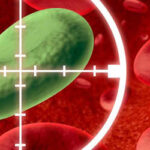
European principles of inhibitor management in patients with haemophilia: implications of new treatment options

The emerging clinical and scientific role of the physiotherapist in haemophilia care.
Given these specialized skills, a combined haemophilia-physiotherapy approach should be highly encouraged , along with international networks like the European Association for Haemophilia and Allied Disorders Physiotherapy Committee and the World Federation of Haemophilia Musculoskeletal Committee to support …

Acquired multi-segment foot kinematics in haemophilic children, adolescents and young adults with or without haemophilic ankle arthropathy.
Request
Introduction and aim: The ankle joint remains vulnerable in children with haemophilia and is the primary joint affected. The purpose of this study was to dynamically characterize the segmental foot and ankle kinematics of male children, adolescents and young adults with or without ankle arthropathy.
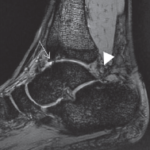
Clinical gait features are associated with MRI findings in patients with haemophilic ankle arthropathy.
Request
Introduction: Haemophilic ankle arthropathy due to repeated joint bleeds often leads to altered gait in adult patients with haemophilia.
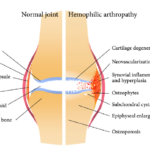
Practical Guidance for Non- Specialist Physical Therapists Managing People with hemophilia and Musculoskeletal Complications.
Request
People with hemophilia (PWH) have impaired blood coagulation and hemostasis. Bleeding into joints and muscles is the main manifestation of the disorder, causing severe joint damage and muscle complications.
not all PWH have convenient access to an HTC, and they may be referred to local non-specialist PTs, who may have only limited experience with the condition, for day-to-day physical therapy treatment. This article, written by four experienced hemophilia PTs, introduces key aspects of the pathology of the hemophilic joint in adult PWH with musculoskeletal complications or established joint disease (or those with inhibitors) that are relevant to PTs. The characteristic differences between the joints of PWH and those of people with similar pathologies are clarified. Practical advice on how the physical therapy consultation can be adjusted for PWH is given, and the importance of communicating with the HTC emphasized. The aim of this narrative review is to raise awareness of hemophilia and joint disease for non-specialist PTs, and serve as helpful background information for PTs who encounter PWH with musculoskeletal complications or established joint disease in their clinics.
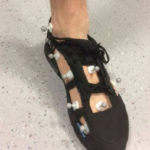
The biomechanical behaviour of ankle and foot joints during walking with shoes in patients with haemophilia.
Request
Introduction: Patients with haemophilia (PwH) often prefer shod walking over barefoot walking as footwear offers ankle joint stability and comfort during gait.
Yet, the biomechanical mechanisms contributing to the latter remain poorly understood. Aim: To explore the effect of shoes on the biomechanical functioning of the ankle and foot complex in PwH with and without haemophilic ankle arthropathy and to determine the amount of ankle joint loading during shod walking. Methods: We analysed data of PwH without haemophilic ankle arthropathy (n = 5) and PwH with severe haemophilic ankle arthropathy (n = 17) and a control group (n = 17). During 3D gait analysis, a four-segment kinetic foot model was used to calculate kinematic and kinetic parameters of the ankle, Chopart, Lisfranc and first metatarsophalangeal (MTP 1) joints during both barefoot and shod walking. Results: We found a significantly greater ankle joint power generation during shod walking compared to barefoot walking in PwH with severe haemophilic ankle arthropathy (P < .001). Chopart joint biomechanics were significantly lowered in all three groups during shod walking compared to barefoot walking. During shod walking, the ankle joint load was significantly lowered in both PwH groups (P = .039 and P = .002), but not in the control group (P = .952). Conclusion: Explorations in this study uncover a tendency that shoes alter the biomechanical functioning of the ankle and foot complex in PwH and simultaneously lower the ankle joint load during walking.

Cross-cultural adaptation and validation of the Canadian Haemophilia Outcomes-Kids’ Life Assessment Tool (CHO-KLAT) in Côte d’Ivoire (the Ivory Coast)
Health-related quality of life evaluation is recognized as an important outcome in the assessment of boys with haemophilia.
reliability assessment. Results: The initial Ivoirian version of the CHO-KLAT2.0 was developed through a linguistic adaptation performed in close collaboration with members of the local medical team and haemophilia community. Cognitive debriefings were completed with five boys and their parents, with the final Ivoirian version of the CHO-KLAT2.0 developed in September 2017. The validation process included 37 boys with haemophilia (mean age: 11.4 years; 34 with severe and three with moderate forms of haemophilia, all treated on demand) and their parents. Among the child-reported population (n = 20), we observed a mean CHO-KLAT2.0 score of 51.3 ± 9.2; there was a moderate correlation between the CHO-KLAT2.0
and PedsQL scores (r = 0.581; p = 0.007) and an inverse correlation of the CHO-KLAT2.0 and PedsQL scores with the global rating of the degree to which the boys were bothered by their haemophilia. The mean parent proxy CHOKLAT2.0 score (n = 17) was 53.5 ± 9.8. Among the parents, we found no significant correlation between the Ivoirian CHO-KLAT2.0 and PedsQL scores or between the parent-reported scores and the parent global ratings of bother. The test-retest intraclass correlation coefficient was 0.879 (95% CI: 0.673; 0.954) for the child-reported questionnaires and 0.880 (95% CI: 0.694; 0.955) for the proxy-reported questionnaires.

Le rôle de la kinésithérapie (physiothérapie) dans le suivi de l’hémophilie : l’indispensable complément
Si l’hémophilie est une maladie hématologique caractérisée par un déficit partiel ou complet du facteur VIII ou IX de la coagulation, ses complications hémorragiques affectent avant tout le système musculosquelettique.

Cross-cultural adaptation and validation of Haem-A-QoL in Côte d’Ivoire
Request
Introduction: Health-related quality (HRQoL) evaluations are considered essential outcomes in the assessment of people with haemophilia.
available in sub-Saharan African countries. Aims: This study sought to perform a cultural adaptation and validation of the Haemophilia Quality of Life Questionnaire for Adults (Haem-A-QoL) in Côte d'Ivoire. Methods: The process comprised several steps, such as linguistic adaptation, cognitive debriefing interviews with adult haemophilia patients and psychometric testing,
including reliability (internal consistency, test-retest reliability) and validity assessments (convergent with EQ-5D-5L, criterion with HJHS 2.1, known-groups). Results: The final Ivoirian Haem-A-QoL version was obtained in December 2017 following linguistic adaptation and cognitive debriefings with six participants. The validation process included 25 patients, mainly haemophilia A patients (88%) with severe forms (80%). All participants received on-demand treatment, with joint impairment observed in 92%. Internal consistency and test-retest reliability of the Ivoirian Haem-A-QoL were very good. A Pearson correlation analysis revealed a moderate negative correlation between EQ-VAS and total Haem-A-QoL scores and a moderate positive correlation between HJHS 2.1 and total Haem-A-QoL scores. Conclusions: A cross-culturally adapted and validated Haem-A-QoL version in Côte d'Ivoire is now available, enabling measurement of intervention outcomes in the targeted population and Ivorian participation to multisite international trials. However, further work is needed to ensure optimal understanding of HRQoL questionnaires, previously developed in culturally
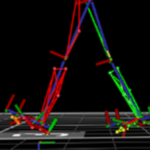
Blood-induced cartilage damage alters the ankle joint load during walking.
Request
Ankle cartilage damage due to repeated joint bleeds often leads to altered gait in adult patients with hemophilia. It is therefore of clinical importance to develop an understanding of the biomechanical gait features in hemophilia patients with and without blood-induced cartilage damage and age-matched control subjects.

Development and evaluation of appropriate, culturally adapted educational tools for Ivorian patient with haemophilia, haemophilia carriers and their families
Request
Introduction: Patient education is the cornerstone of the management of chronic diseases like haemophilia.
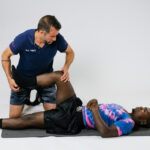
Implementation and assessment of a self- and community-based rehabilitation programme in patients with haemophilia from Côte d’Ivoire.
Request
Introduction: In resource‐constrained countries, few patients with haemophilia (PWH) have access to clotting factor concentrates (CFC), with increased musculoskeletal (MSK) complications.
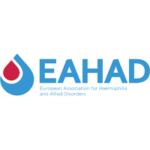
Scope of practice of haemophilia physiotherapists: a European survey.
Request
Introduction: European guidelines on the care of haemophilia recommend ready access to a range of services provided by a multidisciplinary team of specialists including physiotherapy.
regular training, standardized validation and maintenance of competency for assessment tools, (d) well‐designed randomized clinical studies with larger numbers of participants from multiple sites should be the focus of future research.

Haemophilia in Côte d’Ivoire (the Ivory Coast) in 2017: Extensive data collection as part of the World Federation of Hemophilia’s twinning programme.
Request
Introduction: In sub‐Saharan African countries, research on haemophilia is limited.
logbook review, pedigree establishment, clinical examination and laboratory testing. Results: Data on 81 patients with haemophilia (PWH) (78 severe and moderate) were collected. Postcircumcision bleeding was the most common diagnosis reason (32%). Mouth bleeds and skin wounds accounted for 55.2% of bleeds. Pedigrees revealed 63 deaths in affected relatives among 33 families. Most PWHs (76.5%) were treated on demand, and 21% had never been exposed to clotting factor. Non‐substitutive therapies (tranexamic acid [43%], physiotherapy [11%] and DDAVP [0%]) were underused. Overweight was uncommon. Knees were the most clinically affected joints at the Hemophilia Joint Health Score. Inhibitors were present in 7.8% of previously treated PWHs. Conclusions: This study highlights the value of simple, feasible and inexpensive tools to collect data in the Ivorian haemophilia population and provides the basis for developing and implementing locally appropriate strategies to improve screening, diagnosis, preventive care, treatment and education. It demonstrated the WFH twinning programme benefits for haemophilia care in the developing world.

Hemophilia carrier’s awareness, diagnosis, and management in emerging countries: a cross-sectional study in Côte d’Ivoire (Ivory Coast)
Little data is available on awareness of hemophilia carrier condition or associated bleeding risk and management in Sub-Saharan African countries.
a FVIII < 0.5 IU/mL in 12.5%. Conclusions: This study highlights the need of implementing care for hemophilia carriers in developing countries, and the high value of pedigree analysis for carrier identification, along with the relevance of diagnosis, treatment, and education of carriers, families, and caregivers.

Impact de l’activité physique sur trois comorbidités liées à l’hémophilie
Dans cet article, nous passons en revue trois comorbidités qui peuvent non seulement influer sur la capacité d’un patient à participer à une AP,

Recommendations on multidisciplinary management of elective surgery in people with haemophilia.
Request
Planning and undertaking elective surgery in people with haemophilia (PWH) is most effective with the involvement of a specialist and experienced multidisciplinary team (MDT) at a haemophilia treatment centre.
should be consulted to ensure that their expectations and functional goals are realistic and can be achieved. The planning phase should ensure that surgery proceeds without incident, but the surgical team should be ready to handle unanticipated events. Similarly, the broader MDT must be made aware of events in surgery that may require postoperative plans to be changed. Postoperative rehabilitation should begin soon after surgery, with attention paid to management of haemostasis and pain. Surgery in patients with inhibitors requires even more careful preparation and should only be undertaken by an MDT experienced in this area, at a specialized haemophilia treatment centre with a comprehensive care model.
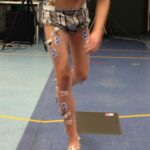
Postural control during a transition task in haemophilic children, adolescents and young adults with haemophilic ankle arthropathy.
Request
Background: The aim of this study was to determine whether young haemophilic boys with and without MRI-based signs of ankle arthropathy demonstrate reduced balance ability during a transition task with eyes open and eyes closed.

Assessment of passive musculoarticular ankle stiffness in children, adolescents and young adults with haemophilic ankle arthropathy.
Request
Objectives: To measure passive musculoarticular ankle stiffness (PMAAS) and its intra- and interday reliability in adult control subjects without ankle disorders.
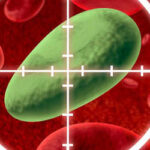
European principles of inhibitor management in patient with haemophilia.
Background: In spite of recent major advances in the understanding and treatment of inhibitor development in patients with haemophilia, multidisciplinary management of many of these patients remains suboptimal and highly heterogenous across Europe.
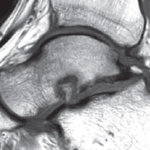
Reliability and clinical features associated with the IPSG MRI tibiotalar and subtalar joint scores in children, adolescents and young adults with haemophilia.
Request
Objectives: To assess the reliability of the IPSG MRI scale for tibiotalar (TTJ) and subtalar joint (STJ) changes in young haemophilic patients, correlating MRI findings with functional scores and 3D-rearfoot kinematics.
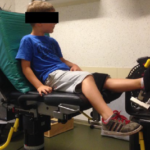
Deficits of ankle muscle strength not found in children, adolescents and young adults with haemophilic ankle arthropathy.
Request
Objectives: Adequate management of haemophilia patients requires early detection of joint impairment in relatively asymptomatic patients.

Biomechanical markers and theoretical concepts related to hemophilic ankle and subtalar joint arthropathy: introducing the term “hemophilic tarsal pan-arthropathy”.
Request
Objectives: Background: Although regular factor replacement can reduce the incidence of joint bleeds and slow down the development of haemophilic arthropathy, the ankle joint remains particularly vulnerable even in children with haemophilia on primary or secondary prophylaxis and is now the primary joint affected.
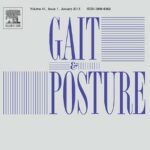
3D mutisegment foot kinematics in children: A developmental study in typically developing boys.
Request
Background: The relationship between age and 3D rotations objectivized with multisegment foot models has not been quantified until now.
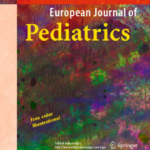
Postural control of typical developing boys during the transition from double-leg stance to single-leg stance.
Request
Literature is lacking information about postural control performance of typically developing children during a transition task from double-leg stance to single-leg stance.
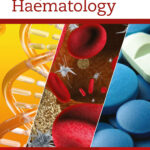
The Second Team Haemophilia Education Meeting, 2016, Frankfurt, Germany.
Request
The first Team Haemophilia Education (THE) Meeting was held on 7-8 May 2015 in Amsterdam, The Netherlands. It aimed to promote the optimal care of patients with haemophilia through education of the multidisciplinary treatment team.

Stop only advising physical activity in adults with haemophilia… prescribe it now! The role of exercise therapy and nutrition in chronic musculoskeletal diseases.
Request
In the past, patients with haemophilia (PWH) have been advised against participation in physical activity. It is now recognized that properly managed exercise and participation in appropriate sports can be highly beneficial for them.

Partnering to change the world for people with haemophilia: 6th Haemophilia Global Summit, Prague, Czech Republic, 24–26th September 2015.
Request
The 6(th) Haemophilia Global Summit was held in Prague, Czech Republic, in September 2015.
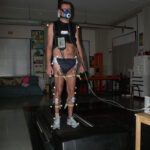
L’analyse quantifiée de la marche: principes et applications cliniques.
La marche est une succession de mouvements cycliques répétitifs avec des déplacements s’effectuant dans les trois plans de l’espace.
et segmentaires, des variables dynamiques, des variables énergétiques et d’électromyographie. Les variables cinématiques segmentaires permettent de décrire le déplacement des segments corporels dans les trois plans de l’espace. Celles-ci sont enregistrées à l’aide de caméras infrarouges et permettent de reconstituer la démarche du patient dans les trois dimensions. Les variables dynamiques sont enregistrées à l’aide d’une plate-forme de force. Elles permettent de déterminer les forces musculaires engendrant le mouvement et le type de contraction musculaire réalisée. Inconsciemment, nous marchons avec une consommation énergétique minimale. Les variables énergétiques enregistrent la consommation en oxygène du patient par unité de distance parcourue et représentent ainsi un très bon indicateur de la “pénibilité” du patient à se déplacer. L’électromyographie permet quant à elle d’identifier les muscles responsables du mouvement.

Managing Haemophilia for life: 5th Haemophilia Global Summit.
Request
The 5th Haemophilia Global Summit was held in Barcelona, Spain, in September 2014.

Managing haemophilia for life: 4th haemophilia global summit.
Request
The 4th Haemophilia Global Summit was held in Potsdam, Germany, in September 2013 and brought together an international faculty of haemophilia experts and delegates from multidisciplinary backgrounds.
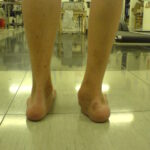
Optimal management of hemophilic arthropathy and hematomas.
Hemophilia is a hematological disorder characterized by a partial or complete deficiency of clotting factor VIII or IX.

The benefits of exercise for patients with haemophilia and recommendations for safe and effective physical activity.
Request
Most health care professionals involved in the management of people with haemophilia (PWH) believe that exercise is beneficial and its practice is widely encouraged. This article aims to demonstrate that appropriate exercise (adapted to the special needs of the individual PWH) may be beneficial for all PWH through improved physical, psychosocial and medical status.
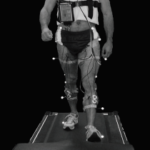
Three-Dimensional Gait Analysis Can Shed New Light on Walking in Patients with Haemophilia.
In patients with haemophilia, the long-term consequences of repeated haemarthrosis include joint cartilage damage and irreversible chronic arthropathy, resulting in severe impairments in locomotion.

Impact of multiple joint impairments on the energetics and mechanics of walking in patients with haemophilia.
Request
Few studies have assessed the changes produced by multiple joint impairments (MJI) of the lower limbs on gait in patients with haemophilia (PWH).
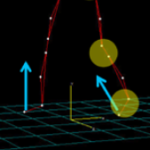
Functional assessment of haemophilic arthropathy with three-dimensional gait analysis.
In patients with haemophilia, the long-term consequences of repeated haemarthrosis include joint cartilage damage and irreversible chronic arthropathy, resulting in severe impairments in locomotion.
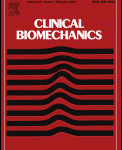
Impact of ankle osteoarthritis on the energetic and mechanics of gait: The case of hemophilic arthropathy.
Request
Background: Osteoarthritis may affect joints in any part of the body, including the ankle. The purpose of this study was to assess the impact of ankle osteoarthritis on the energetics and mechanics of gait, while taking into account the effect of slower speed generally adopted by patients with osteoarthritis.
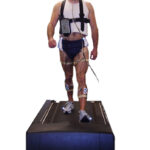
Functional impact of custom-made foot orthoses in patients with haemophilic ankle arthropathy.
Request
Although foot orthoses are often prescribed to patients with haemophilia (PWH) and ankle arthropathy, the efficacy and biomechanical effects of such devices are not fully understood.
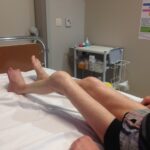
De behandeling van hemartrose bij hemofiliepatienten: Deel 1 pathofysiologie en diagnose. Deel 2 therapie
Hemofilie is een bloedziekte die wordt gekenmerkt door een partiële of volledige factor VIII- of factor IX-deficiëntie en die vooral bloedingen veroorzaakt in spieren en gewrichten.

La prise en charge des hémarthroses chez les patients hémophiles. Partie 1: pathophysiologie et diagnostic. Partie 2: Traitement
Si l’hémophilie est une maladie hématologique caractérisée par un déficit partiel ou complet du facteur VIII ou IX de la coagulation, ses complications hémorragiques affectent avant tout le système musculo-squelettique.
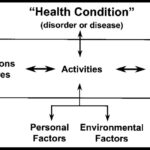
Body structure versus body function in haemophilia: the case of haemophilic ankle arthropathy.
Request
Background: Imaging and clinical scores are the main tools used to evaluate the progression of haemophilic arthropathy (HA). Based on haemophilic ankle arthropathy, this study aimed to explore the concordances between structural and clinical alterations, determined by standard radiological and clinical scores, and functional alterations assessed by three-dimensional gait analysis (3DGA).

Natural progression of blood-induced joint damage in patients with haemophilia: clinical relevance and reproducibility of three-dimensional gait analysis.
Request
A major complication in haemophilia is the destruction of joint cartilage because of recurrent intraarticular and intramuscular bleeds.
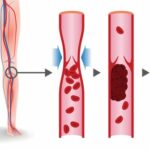
Subclinical deep venous thrombosis observed in 10% of haemophilic patients undergoing major orthopaedic surgery.
Deep venous thrombosis (DVT) is a common postoperative complication in patients undergoing major orthopedic surgery of the lower limbs, such as total hip replacement, total knee replacement or hip fracture surgery.

The role of physiotherapy after Total Knee Arthroplasty in patients with haemophilia.
Request
With the availability of clotting factor concentrates, advances in surgical techniques, better implant design, and improvements in postoperative management, total knee arthroplasty has become the treatment of choice for haemophilia patients suffering from end-stage haemophilic knee arthropathy.
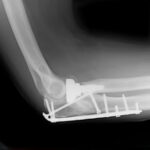
Physiotherapy following elective orthopaedic procedures.
Request
As haemophilic arthropathy and chronic synovitis are still the most important clinical features in people with haemophilia, different kinds of invasive and orthopaedic procedures have become more common during the last decades.
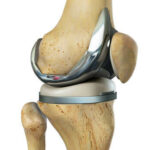
Outcome assessment in osteoarthritic patients undergoing total knee arthroplasty.
Request
The purpose of this study was to better understand the relationship between knee pain, locomotor functional status, and health-related quality of life (HRQoL) outcomes in osteoarthritic (OA) patients undergoing primary total knee arthroplasty (TKA).
